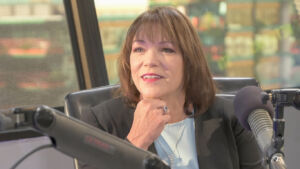Arizona State University Foundation Professor Kip Hodges is co-investigator and ASU principal investigator for a node of the new NASA Solar System Exploration Research Virtual Institute (SSERVI). SSERVI brings nine teams of researchers from NASA laboratories, universities, research institutions, and commercial enterprises together in a collaborative virtual setting to focus on questions concerning planetary science and human space exploration in the inner Solar System.
Through Hodges participation, ASU is affiliated with “Field Investigations to Enable Solar System Science and Exploration” team that is led by Jennifer Heldmann of NASA’s Ames Research Center. Other nodes of the virtual institute are based at Brown University, the Johns Hopkins University’s Applied Physics Laboratory, the Lunar and Planetary Institute (Houston, Texas), NASA’s Goddard Spaceflight Center, the Southwest Research Institute (Boulder, Colo.), Stony Brook University, the University of Central Florida, the University of Colorado. All together, the new virtual institute embraces the research of nearly 200 scientists nationwide, providing them with a total of roughly $12 million per year over the next five years.
“I’m very pleased that, through Jen’s leadership, the NASA Ames node was selected to be an inaugural part of SSERVI”, said Hodges. “I think we have assembled a great team of researchers that cross the boundaries between planetary science and the engineering and implementation of new technologies to enhance our ability to do science on other worlds.”
In addition to researchers from the Ames Research Center and ASU, the NASA Ames team includes participants from: the BAER Institute; the Canadian Space Agency; Cornell University; Evergreen Valley College; Honeybee Robotics; Idaho State University; the Korean Institute of Geoscience & Mineral Resources; Los Gatos Research; the Massachusetts Institute of Technology; Purdue University; the SETI Institute; Studio 98; the University of Toronto; the University of Western Ontario; Wyle Integrated Science and Engineering; and NASA’s Goddard, Johnson, Kennedy, and Marshall Space Flight Centers.
The NASA Ames team will focus on the development of innovative strategies for scientific research on asteroids, the Moon, and the moons of Mars – as well as on samples returned from those bodies – through studies of planetary analog sites on Earth. Hodges notes that it is important to establish best practices for human and robotic exploration of space prior to the launch of real missions so that we can maximize the quality and quantity of science that can be done at our exploration targets.
“By studying geologic features on Earth that are similar to those we will encounter on other bodies, we better prepare ourselves for future explorations.” The NASA Ames node will be conducting such studies on volcanic landscapes in Idaho and at meteorite impact craters in northern Canada.
Hodges was recruited for participation in SSERVI as a consequence of his research group’s work on determining the ages of impact events on Earth and the Moon.
“On coming to ASU in 2006, it was one of my goals to establish a world-class center for noble gas geochronology and geochemistry in the School of Earth and Space Exploration. Thanks to investments by ASU, the National Science Foundation, and NASA, the laboratory my research group has worked hard to put together enables some very creative work, including our pioneering use of laser microprobe technologies for dating impact events”, Hodges says.
Recent work of this kind has focused on a variety of terrestrial impact sites and on lunar impact rocks brought back during the Apollo 16 and 17 missions. Many members of Hodges’ research group – research scientists Mathijs van Soest and Jo Anne Wartho, postdoctoral associates Marc Biren, Frances Cooper, and John Weirich, and graduate students Cameron Mercer and Kelsey Young – have contributed to building the laboratory’s reputation as a leading facility for impact dating.
“Our participation in the work of the NASA Ames node of SSERVI permits us to expand our work on terrestrial impact sites in a way that will feed forward into future studies of samples returned from exploration targets like near-Earth asteroids, our Moon and the moons of nearby planets, or Mars. We are excited to be part of such a great effort, and look forward to helping NASA write the next chapter in the history of space exploration,” states Hodges.



